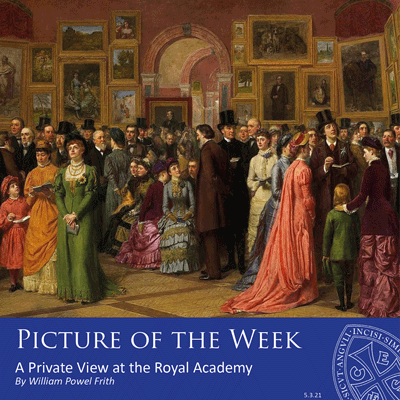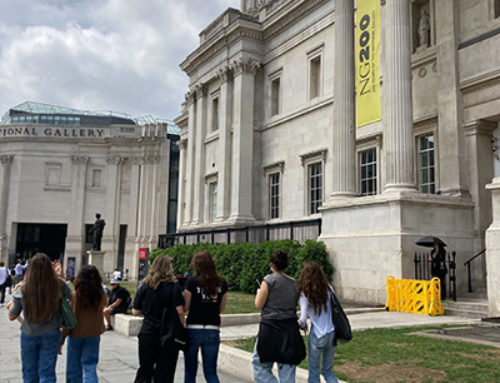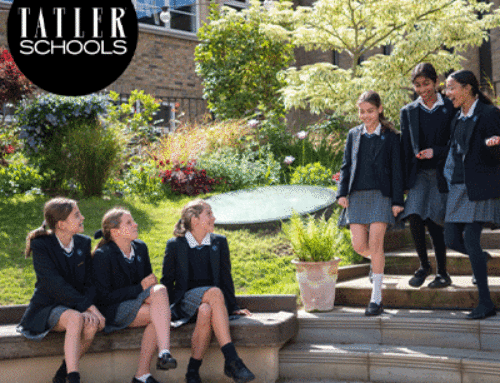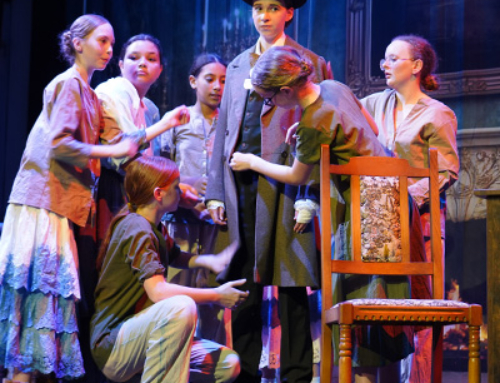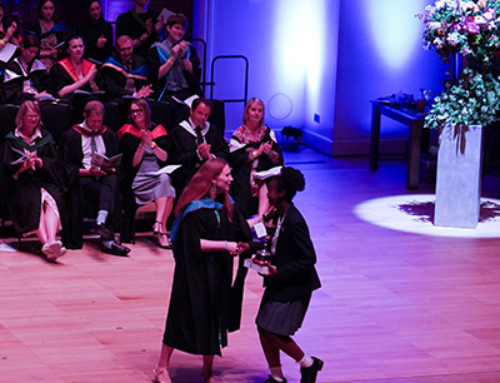For this week, I thought we should look at a painting which records a social occasion that happened in the very year that Francis Holland School was founded and the figures depicted might include governors, parents or grandparents of the girls who first attended.
Sarah Carr Gomm, Head of History of Art
William Powel Frith, A Private View at the Royal Academy of 1881, 1883, oil on canvas, 60 x 114 cm, Private Collection.
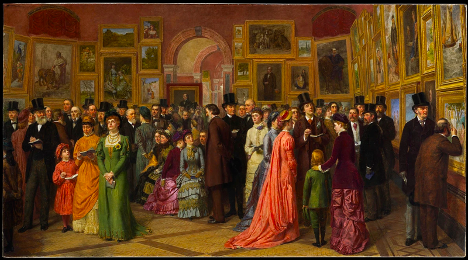
This scene records the event, the Summer Exhibition at the Royal Academy, which occurred at the beginning of the season’s social rounds and was attended by those who liked to be seen in the right places. They are gathered in the largest exhibition room where every painting is recognisable and these are placed exactly as they were hung: Frith had the room photographed in order to depict it accurately. In the crowd there are celebrities of all sorts – statesmen, poets, judges, philosophers, musicians, painters, actors and others and although many of them are holding catalogues, they came to see society at large as much as the paintings.
Among the distinguished figures are, from left to right, the tall, bearded author, Anthony Trollop with a black top hat, taking notes; behind and just to the left of the woman in mustard is Prime Minister William Gladstone; a portrait of Benjamin Disraeli, who had just died, is placed under the arch; in the centre of the composition, in a brown suit turning away from us is Sir Frederick Leighton, President of Royal Academy; next to him in a black top hat is the sober William Thompson, Archbishop of York; and, head above the crowd dominating the right of the painting, with a lily in his buttonhole, is Oscar Fingal O’Flahertie Wills Wilde. The frame had their names written on it so people could identify them in case they didn’t already know who they were.
Of course, there was plenty of gossip – the short, red nosed journalist, G.A. Sala, in a white waistcoat on the right had a reputation for drunkenness and a penchant for flagellation, and the woman on the far left of the group sitting on an ottoman in the centre is the philanthropist Baroness Burdett-Coutts who married in 1881 for the first time aged sixty-six; her husband, standing behind her, William Lehman Ashmead Bartlett Burdett-Coutts, with a top hat looking down, was thirty-seven years her junior. Except for the two actresses, Lillie Langtry, the muse and the mistress of the Prince of Wales, seen in the centre wearing white, and Ellen Terry in profile just to the right of Wilde, the standing women in the painting were models who apparently caused the artist much grief for being unpunctual, or drunk, or for stealing from him.
Frith loved to paint a panorama of modern life and point out the folly of man. He had a dislike of affectation and preferred good old common sense and here he is making fun of the Aesthetes, most notably Oscar Wilde, whom he paints as a self-appointed critic and arbiter of good taste with some adoring acolytes who hang on his every word. Frith thought loose dresses, like the salmon pink one next to Wilde, were ridiculous and preferred the more conservative frills and hour-glass, tightly corseted dresses of the women in the centre – no wonder they are sitting down!
Frith certainly loved a crowd. With his first wife Isabelle, whom he married in 1845, he had ten children who survived infancy and, after 1855, he had another, secret family with a further eight children. Not one for a quiet life then! Although his work was belittled by the critics, he was, luckily, one of the richest painters of the age and, his work was so admired by the public, that his major paintings had to have a rail and guard to protect them. People loved looking at themselves, playing spot the celebrity and indulging in gossip. Plus ça change!


